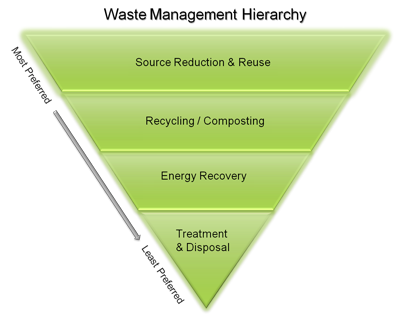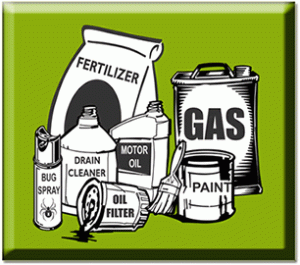What is Hazardous Now ?
Posted: January 26, 2014 Filed under: Environmental Issues | Tags: Construction, Farm, Hazardous, Hazardous Waste Characteristics, Household, Retail, Waste, waste management practices Leave a commentThe definition of what is hazardous is ever changing. Generally, it is NOT that something once considered hazardous, is no longer considered a danger. But rather, the whole perspective about waste is changing. The EPA has a document online titled “Hazardous Waste Characteristics – A User-Friendly Reference Document” that has actually been in print since Oct 2009. Hazardous waste generally falls into the following six categories: flammables, corrosive acids, corrosive bases, reactives/oxidizers, toxics, and universal non-aerosols. I find it interesting to note that at the retailer level, merchandise considered un-saleable is now be categorized as 1) returnable to the manufacturer, 2) able to be reused via donation, 3) resold, or 4) as waste. Such a perspective is a good one for every person to take into consideration.
At the retail point, customer returns, expired inventory and overstocked inventory should all be carefully considered. Examples of good handling include seeking a manufacturer credit for expired medication, or ordering less volume with seasonal products, like sunscreen that may have low sales, but must be treated and discarded as a hazardous material. Retailers can also analyze waste production to identify ways to optimize their inventory, decrease the amount of scrap produced, even potentially receive credit for inventory scrap losses, similar to manufacturer credits received for expired medications.
Responsible management of waste is an essential aspect of sustainable building. In this context, managing waste means eliminating waste where possible; minimizing waste where feasible; and reusing materials which might otherwise become waste. Solid waste management practices have identified the reduction, recycling, and reuse of wastes as essential for sustainable management of resources. Businesses and citizens of the U.S. legally dispose of millions of tons of building-related waste in solid waste landfills each year. Increasingly, significant volumes of construction related waste are removed from the waste stream through a process called diversion. Diverted materials are sorted for subsequent recycling, and in some cases reused.
In recent years, construction industry awareness of disposal and reuse issues has been recognized to reduce volumes of construction and demolition waste disposed in landfills. Many opportunities exist for the beneficial reduction and recovery of materials that would otherwise be destined for disposal as waste. Construction industry professionals and building owners can educate and be educated about issues such as beneficial reuse, effective strategies for identification and separation of wastes, and economically viable means of promoting environmentally and socially appropriate means of reducing total waste disposed.
Our business, Yemm & Hart Ltd, is involved in the construction industry. If it were not for waste, we would not have the products to offer the building trades that we do. We are proud of “extending the life of extracted natural resources” by making discarded and scrap materials into new building material products, so that the sustainability of such resources is enhanced. Our products include Origins (a panel product from post-consumer plastic containers, suitable for surfacing, countertop and restroom partition applications), Tire Veneer (a rubber surfacing and flooring material from tires), Flexisurf (a post-industrial PVC scrap utilization) and Wine Cork Tiles (from post-consumer wine cork stoppers and granulated post-industrial and post-consumer cork re-processing).
Waste is hazardous, if not managed. If you’ve not seen the family movie Wall-e, watch it and you will come away realizing that an economy built on consumption without waste management practices will eventually run out of space for life. No matter whether we are functioning at an individual level, or at the commercial level, every person can do their part to reduce the impact of hazardous substances and waste on our planet’s quality for sustaining life at healthy levels. All natural cycles are a balance of form creation and form dissolution.
On our farm, we refuse to use herbicides or pesticides. We have an “organic” tree farm where we practice the natural vegetation control methods (Missouri IS a jungle in summer) of burning, mowing and resource blocking (tubes and mats) for our tree plantings. We pile up logging debris to melt down over time and attend to any erosion possibilities post logging. Our logging is never clear-cut, it is uneven age management to promote the vitality of our forest for the future well-being of the farm and the planet. We have a family cemetery where our natural burials will eventually return our body’s materials to nature. Cremation is an option for people without such luxuries.
In our family, we practice waste control. We do not have locally provided waste services here in the wilderness. We recycle everything possible (glass, metal, plastic, paper, chipboard and cardboard). We compost all organic materials, including the Pine shaving (from industrial waste) litter of our kitchen bunny, Walnut (which goes into our compost pile along with kitchen scraps and yard maintenance debris). We give obsolete clothing and toys to outreach centers (shelters and thrift shops) and whatever clothing articles are not re-usable go to the rag recycling drop-off at our county recycling center. Our family takes pride in the fact that very little waste from our household goes to the transfer station for landfilling. Tires, batteries and household toxic materials are all disposed of properly. In our area, there is even a safe and sane disposal opportunity for obsolete pharmaceutical medications.
We live in a world economy based on consumption and there is nothing wrong with readily available products at reasonable prices. It is the responsibility of every person who consumes materials to equally consider their proper disposal.
Information Resources –
Hazardous Waste Characteristics – A User-Friendly Reference Document – http://www.epa.gov/epawaste/hazard/wastetypes/wasteid/char/hw-char.pdf
Sustainability Trends Impacting Retailers in 2014 -http://www.environmentalleader.com/2013/12/10/sustainability-trends-impacting-retailers-in-2014/
Construction Waste Management paper by Tom Napier, research architect,
from the Whole Building Design Guide – http://www.wbdg.org/resources/cwmgmt.php?r=sustainable
EPA Household Hazardous Waste – http://www.epa.gov/osw/conserve/materials/hhw.htm
***
Blog author ~ Deborah Hart Yemm is co-founder of
Yemm & Hart, a green materials producer
***



Recent Comments